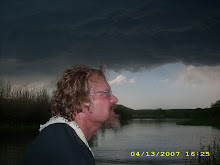
The sidewinder slithered down the steep dune. Clouds of sand whipped in the air. Bye and bye a sheet of plywood came tumbling out of the sky. It struck the snake severing it in half. Melbourne watched from the lee side of the hill as the snake momentarily paused, each half wiggling. Then a blue dragonfly came and hovered over the snake until the wiggling became unison and the two halves joined. Melbourne scratched his head. “Texas Joiner Snake,” he said. Joachim nodded. “Yep, with help from the snake doctor.”
Dragonflies and Damsel flies are insects from the order Odonata. Characterized by two pairs of transparent wings, six legs and an elongated body these predators diet includes mosquitoes and their larvae, flies, bees, ants, wasps and occasionally butterflies. Dragonflies are some of the fastest insects in the world and an Australian dragonfly, the Southern Giant Darner has been clocked at 60 MPH.
Both dragonflies and damsel flies have multifaceted eyes, but the damsel’s are separated. THe damsel also holds its wings, when at rest, parallel with the body whereas the dragon’s wings are perpendicular. The largest damsel fly, the Forest Giant in South America has a wing span of 7.5 inches.
There are over 250 species of damsel and dragon flies in Texas. The Common Blue Damsel fly is common in the Trans-Pecos and can usually be found in spring and summer near tanks, cienagas and rivers. These insects undergo a three stage metamorphosis; egg, nymph and adult. The nymph or larvae stage is an aquatic being.
In some places of the world, dragon and damsel flies are eaten. For example in Indonesia, they are caught on poles made sticky with glue and then fried in oil. In China and Japan they are used in medicine and in the southern USA they are known as snake doctors, watching over all serpents and nursing them when they get sick.
